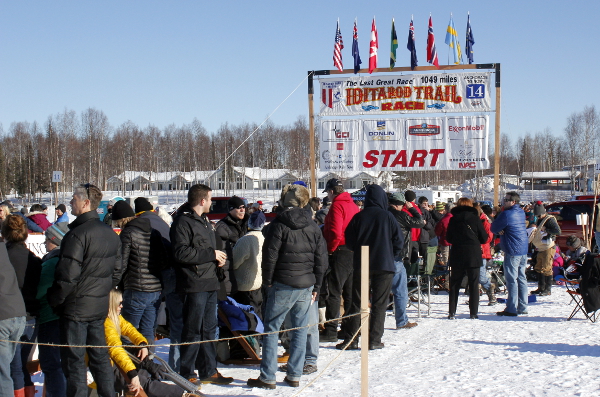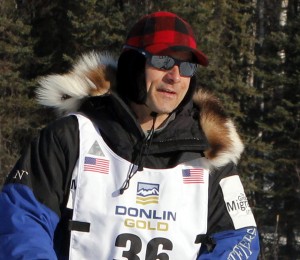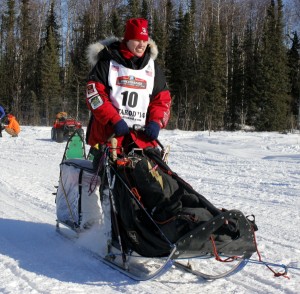
The 42nd annual Iditarod Trail Sled Dog race is underway. Dog teams left Willow Sunday. They’re making their way toward the Alaska Range, where the trail is reportedly extremely rough.

Even the most experienced veterans have concerns about what they might find on their way through the mountains.
Many mushers have their sights set on the checkpoint in Nikolai, including four-time champion, Jeff King.
“If you wipe out your sled or a key dog or sprain your leg, it’s going to happen today or tomorrow,” King said.
Nikolai is the sixth stop along the trail, more than 260 miles from the start line. King says the vast majority of logistical challenges in the Iditarod occur before teams get there.
“Our teams have the most excessive energy they’re going to have the entire way, the teams sizes are largest and it is by far the most challenging piece of trail,” he said.
A YouTube video of the trail outside Rainy Pass shows bare ground, rerouted in spots through the Dalzell Gorge. There are also reports of weak ice on the Rohn River. It’s a trail report Martin Buser is concerned about.
“One slip and it can bring a race to an end or it can really create more challenges,” Buser said.
He’s has run the race 30 times. He’s also a four-time champion with 18 top-ten finishes. He built himself a new sled to handle conditions this year.
Buser: “It’s just a virtually indestructible runner system that’ve built, that I don’t think anybody has in the race, so I know at least my runners are not going to break.”
Schwing: “What did you make them out of?”
Buser: “They’re a high density plastic.”
Buser took the lead early in last year’s race, only to come up short by the time he reached Kaltag. His run-rest schedule was experimental. He was also running a team of young, inexperienced dogs. That team is back, a year older with lots more miles on their legs after a successful mid-distance racing season.

“It is what it is,” he said. “I tried last year and I’ll try maybe even a crazier move this year, but I think the dogs are ready to keep up with an unorthodox schedule.”
Buser’s pale blue eyes twinkle. He doesn’t elaborate. But that kind of cunning doesn’t scare other returning champions like Kotzebue’s John Baker.
“We should expect to see the strongest team that I’ve ever brought to the race,” he said.
Baker says he’s ready to face much of the same competition he has for the last 18 years.
“The same people are here except for Robert Sorlie is back and that will certainly add some flavor to the race for sure,” Baker said.
Robert Sorlie brought 16 dogs from Norway to try for a third Iditarod championship after a seven-year hiatus.
“Oh, I’m very tough,” Sorlie said. “I have been doing dog races for 25 years now in the top all the time. I’ve always been in the top three in mostly every race, so I know what you have to do when you are out there. But of course you have to the team. If you don’t have the team, you cannot do good races.”

Aliy Zirkle believes she has the team Sorlie is talking about. Her petite sled dogs are coming off two years of back-to-back Yukon Quest-Iditarod runs, with two consecutive Quest wins and two Iditarod second place finishes. Zirkle is the favorite in this year’s Iditarod, but that doesn’t worry her.
“I’m going to worry about what’s really kind of critical which will be trail issues, and dog issues and musher issues and that kind of thing, but we’ll just keep figuring it out as we go,” Zirkle said. “That’s what I like about this race. You just keep making decision as you make your way down the trail and hopefully you make the right ones.”
Worry or not, mushers will have to face whatever the trail throws at them as they cross over the Alaska Range. After that, they still might face warm temperatures and there’s plenty of reported glare ice and hard-packed trail as they make their way for Nome.




